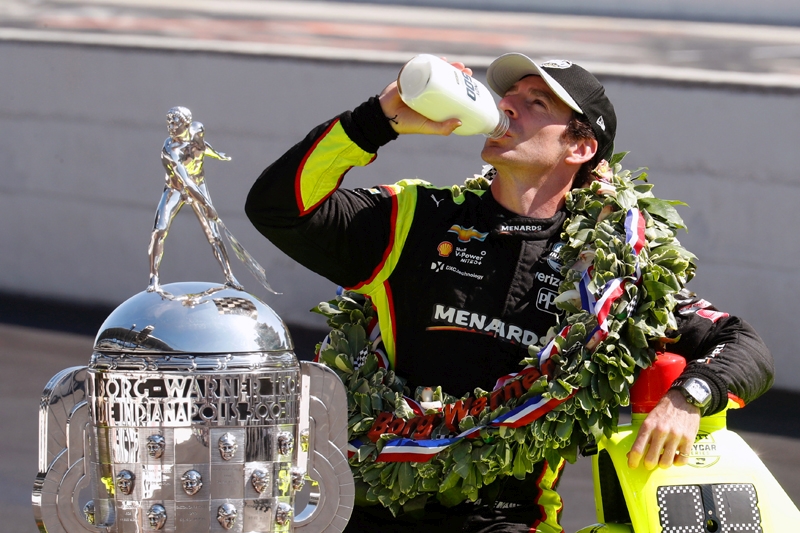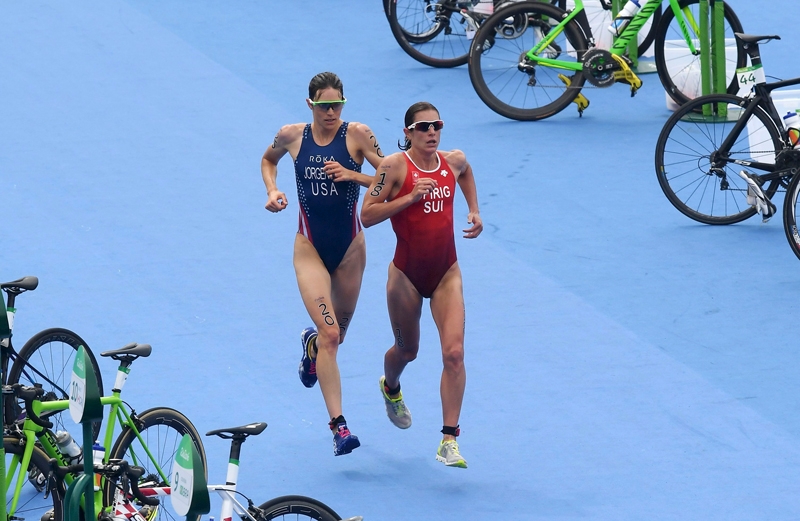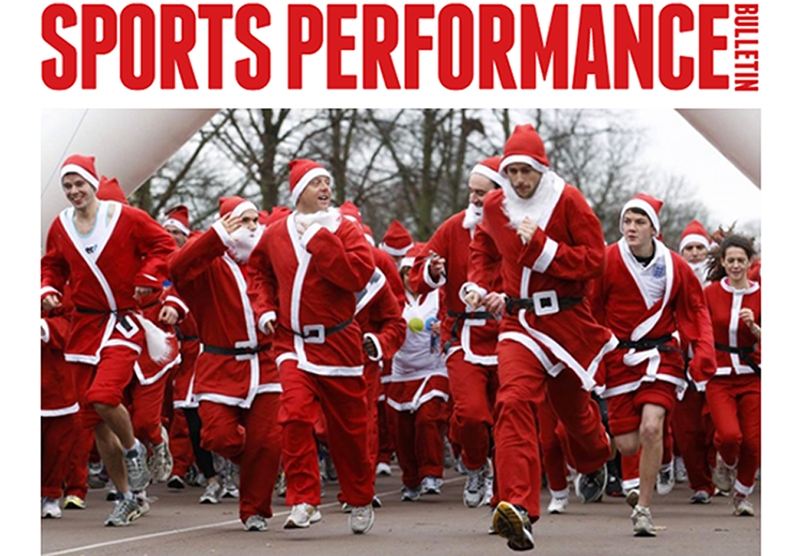Pouring cold water on ice baths?

Ice baths and cold water immersion have become popular tools to speed up recovery. But as Richard Lovett explains, new research suggests that this approach could harm rather than help your long-term performance…
Several years ago, after a particularly grueling marathon, I tried an experiment. I filled a bathtub with water, threw in about 10 kilos of ice, and forced myself to sit in it for 20 minutes. I sat for so long that I nearly gave myself hypothermia, but in the next few days, I had the fastest marathon recovery I’d ever experienced. And although some research revealed that my polar-bear plunge had been both longer and colder than needed, I was soon urging other members of my club to do the same thing!
What I’d done was something that has become been a staple for speeding recovery from races, especially after world-record marathoner Paula Radcliffe announced that ice baths were part of her standard post-race recovery routine. “It’s absolute agony, and I dread it, but it allows my body to recover so much more quickly,” Radcliffe told BBC Sport in 2002.
The logic behind the theory is the same for that used to treat a sprained ankle. Just as a sprained ankle produces tissue damage and inflammation - that can turn your foot into a black-and-blue football - tissue damage from the race can also produce inflammation (albeit on a smaller scale). As well as being uncomfortable in the interim, this inflammation produces soreness, which delays your return to training for the next race. But ice/cold reduces inflammation, so if you’re looking for a speedy post-race recovery, this is definitely a tool you should consider, especially if you have another race 100ming, for which you need to be sharp.
Ice after training
The obvious question to ask is if ice baths work to speed post-race recovery, can they also speed recovery from hard workouts? If so, religious post-workout icing might allow you to do your next hard workout a day or so sooner - something that in turn would allow you to squeeze in an few extra hard training sessions per month.If, for example, icing would let you do two hard workouts every five days, rather than every six days, it would seem that the faster recovery would gain you a 20 percent gain in workout efficiency. For serious competitors that’s a very tempting proposition (despite the discomfort of immersion in arctic-like water!).
Back in 2004 and 2005, when I first started thinking about this, pretty much everyone I knew believed it worked, although many preferred to shiver less and recover more slowly. But surprisingly, the science on the subject is mixed. A 2007 Australian study found that three one-minute immersions in 5°C water did nothing to prevent delayed-onset muscle soreness (DOMS) in weight-lowering exercises designed to induce such soreness(1). But a 2011 French study found that 15-minute ice baths in 10°C water sped recovery in elite footballers, rugby players, and volleyball players(2).
In 2012, a team from the University of Ulster, Northern Ireland, collected data from 17 studies and concluded that on balance, ice baths do appear to mildly effective at reducing muscle soreness and fatigue, although not necessarily any more effective than light jogging, massage, compression socks, or other such recovery techniques(3). From a practical point of view, this means two things:
- First, icing may not work for everyone. “There are athletes who don’t feel like they respond well,” says David McHenry, strength coach for Nike’s Oregon Project. “We certainly don’t force it on them.”
- Secondly, temperature and duration may be critical.
Bob Williams, a Portland, Oregon, coach who has worked with Alberto Salazar, coach of the Nike Oregon Project, which includes such luminaries as Mo Farah, agrees. “Cool water is all you need - with just enough ice to keep it from warming up” he says. And ten minutes may well be time enough.
Unconventional wisdom
But there’s a more important question that has rarely been asked: even if cool-water baths do speed recovery, is that even a good thing after ordinary workouts? In 2006, a study by a team from Japan’s Chukyo University found that the answer might be a resounding no. Routine ice baths during training might make you feel better, but they might make you slower in your next race (see figure 1 below).Figure 1: Ice baths -pluses or minuses?
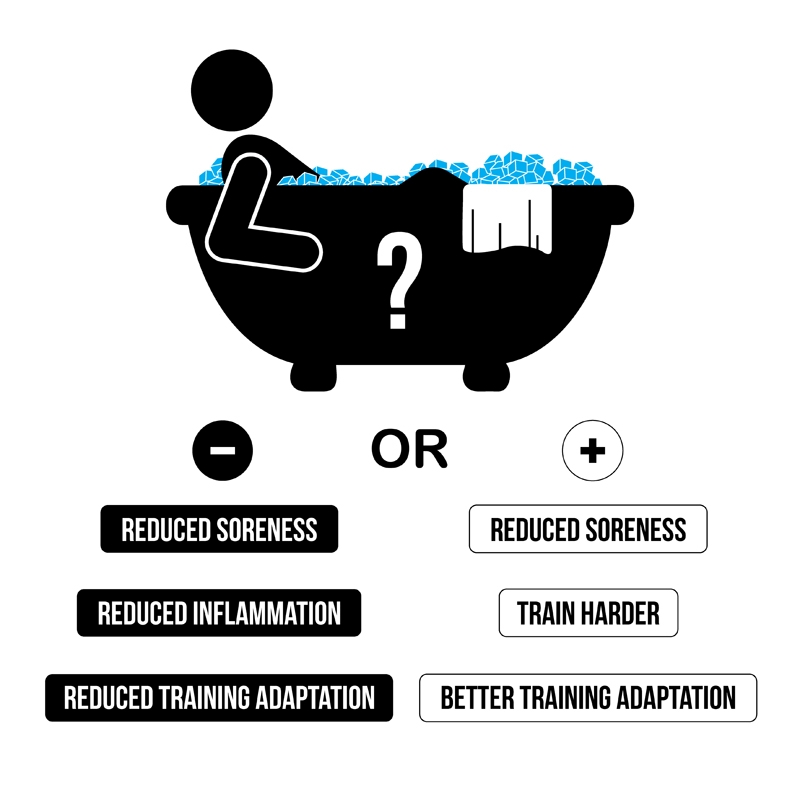
Reduced inflammation and soreness, and the potential to train harder are pluses. But used after training, ice baths are likely to REDUCE training adaptation.
The study put a dozen college-aged men on stationary bicycles and had them spin at moderate intensity (about 70 percent of VO2max) 3-4 times a week for 4-6 weeks of training(4). Another 11 volunteers used handgrip exercises to strengthen their forearms.
Following each workout, the research subjects stuck one limb in an ice bath at temperatures ranging from 5°C (for the stationary cyclists) to 10°C (for the forearm-strengthening group). The other limb stayed at room temperature, allowing each participant to serve as their own control – see figure 2. The results were impressive. At the end of training, the cyclists’ non-ice-bathed legs had gained more strength, more blood circulation, and more endurance than their ice-bathed ones. Even VO2max (measured in single-leg tests) had gone up more than in the ice-bathed legs.
Figure 2: Cycling and handgrip study (top = design; below = results)

 The strength tests were comparable. At the end of the study, the chilled arms had gained 11 percent in strength, while the un-chilled ones had improved by 16 percent. More interestingly for endurance athletes, the number of hand squeezes the subjects could perform at 30 percent of maximum effort improved 45 percent in the un-chilled arms, but only 7.5 percent in the ice-bathed arms.
The strength tests were comparable. At the end of the study, the chilled arms had gained 11 percent in strength, while the un-chilled ones had improved by 16 percent. More interestingly for endurance athletes, the number of hand squeezes the subjects could perform at 30 percent of maximum effort improved 45 percent in the un-chilled arms, but only 7.5 percent in the ice-bathed arms.The study’s conclusion: ice baths are counterproductive, especially for endurance athletes. “They retard rather than support the desired improvement of muscular performance,” the authors dryly wrote. Subsequent research bears this out. In a 2014 study, a team led by Jonathan Peake of Queensland University of Technology, Brisbane, Australia, found that 10-minute ice baths at 50°F produced less muscle growth in cyclists than traditional low-intensity cool-downs(5).
Blocked signals – how ice can harm training adaptation
The benefits of training occur during recovery, as the body remolds itself to be stronger for the next workout. Hard workouts produce micro-damage to muscles, inducing repair processes that leave them slightly better tuned than they were before. But inflammation is an important part of this process. You could think of it as your muscles’ biochemical call for help. Ouch, we’re damaged, they are telling the rest of the body. Come help us repair!All the way back in 2002, a study in the American Journal of Physiology (Endocrinology and Metabolism) found that anti-inflammatory medication such as Ibuprofen and acetaminophen inhibited protein synthesis in muscles after high-intensity exercise(6). Another study found that ibuprofen inhibited muscle strengthening in rats(7). Other studies have found that while anti-inflammatory drugs like ibuprofen might reduce pain, they can retard the healing of injuries, presumably by blocking the inflammatory damage/repair cycle.
For years, coaches and athletes thought that drugs were the culprit and that ‘natural’ anti-inflammatory methods like icing were the solution. But perhaps the real problem lies in trying to knock out the inflammatory response itself, in an attempt to force your body to recover more quickly than it wants to. "Anything that interferes with the natural physiology would likely interfere with the expected outcome [of] larger, stronger muscles," says Brad Aiken, medical director for rehabilitation at Baptist Hospital, Miami, Florida. "Muscle fibers require a certain amount of time for these changes to occur."
Athlete case study: Lyndy Davis

From a training perspective, figuring out how to apply this research is difficult. As a coach myself, I have quit advising runners to take ice baths - except in circumstances when they really need to recover quickly (which might include after a long race, like a marathon or half-marathon). But for ordinary training, I’m lining up with the Japanese researchers.
One of the women I coach, Lyndy Davis, a Oiselle-sponsored runner who made it all the way to the US Olympic Team Marathon Trials, rates herself every day on a 10-point, color-coded scale (see table 1). A rating of 1 or 2 is bad. ‘Pain. Sore. Can’t run’. Or, ‘shouldn’t run but can’. Those would be the days I’d consider sending her to an ice bath.
Table 1: Self-rating table example
| Self-rating score | Description |
| 1 | Extremely uncomfortable and sore – almost impossible to run |
| 2 | |
| 3 | Noticeable tightness and stiffness – can run but uncomfortable |
| 4 | |
| 5 | Lingering tightness |
| 6 | Normal/average |
| 7 | |
| 8 | Feeling smooth/easy |
| 9 | |
| 10 | Fresh as a berry – top form! |
Mind games
If all of this sounds confusing, part of the reason is that there’s also an important placebo effect. Bob Williams, the Oregon coach who has sometimes worked with Nike and Alberto Salazar, believes that regardless of what lab studies may say, post-workout ice baths can be beneficial, because they let athletes feel they are taking control of their recoveries.U.S. 5,000-meter and 10,000-meter record holder Molly Huddle has agreed. A self-described Type-A athlete, she once told me she doesn’t like sitting back waiting for nature to take its course. "Doing nothing can be hard, and taking an ice bath can make me feel like I’m being more proactive. In the end, whether it's psychological or physical, it makes me feel slightly better."
Andrew Begley, who with his wife, 10,000-meter Olympian Amy Begley coaches the elite division of America’s Atlanta Track Club, believes it’s an issue we must all decide individually. “Ice baths work for some people and do little for others,” he says. “Each athlete needs to judge for themselves.”
“I know of no athlete who ices after ever session,” adds Flagstaff, Arizona coach and exercise physiologist Greg McMillan “Typically, icing is used by an athlete who is feeling ‘beat up’ from training or is heading into their key race and wants their legs to feel better.”
Acute injury – when ice IS needed
Whatever you decide to do following hard workouts, a sprained ankle or pulled muscle still needs ice, experts say."There's a difference between muscle recovery from exercise and recovery from major trauma or surgery," says rehabilitation specialist Aiken. "In the latter, bleeding, inflammation, and excessive swelling can lead to secondary damage and can delay healing."
But this doesn't mean you should ice, ice, ice, indefinitely. Here, too, there are studies showing that inflammation is a signal calling for healing help from the rest of the body and that shutting it down too strongly may delay the process. "Once you're past the initial stage of injury (usually about two to five days), acute swelling is no longer occurring, and cold can actually slow the blood flow needed for healing.
Key points
- Ice baths are controversial. If you choose to use them, figure out why and don’t just do it because it’s what everyone else is doing
- Use them when you are really sore or injured or need to recover, quickly – for an impending race for example. If there’s no urgency – eg after normal training - let nature take its course
- Don’t make ice baths too cold. Cool is probably cold enough
- Experiment with temperature and duration and see what works best for you
- Keep a detailed training log, and let results be your guide
Coach case study: David McHenry
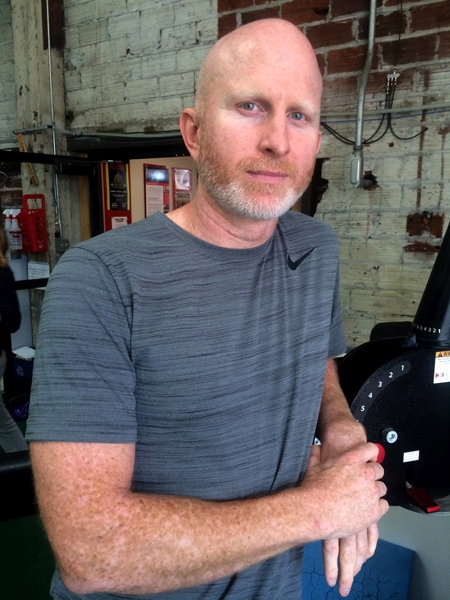
David McHenry is a physical therapist and strength coach for Nike’s Oregon Project, which produced three medalists in the Rio Olympics - Mo Farah (gold, 5,000m and 10,00m), Galen Rupp (bronze, marathon), and Matthew Centrowitz (gold, 1500m). A few weeks after the games, he spoke to Sports Performance Bulletin from his clinic in Portland, Oregon, discussing his experience with the use of ice baths for his runners. McHenry himself had never read the 2006 Japanese study, but finds its results intriguing when they were described. “There’s a lot of research that says icing has benefits,” he says. “But it also shuts off the protein synthesis that is necessary for strength and endurance adaptation.”
Over the years, McHenry has experimented with the tradeoff between using cryotherapy to increase recovery and avoiding it to produce greater strengthening. There have been times, for example, when he has avoided advocating the use of ice baths altogether. “We have gone through cycles where we didn’t to it at all,” he says. “I can’t say definitively that we have had more success with it than without it. It’s something we continue to play around with.”
McHenry realises that such vague advice might be frustrating for those seeking a perfect formula, but notes that this is simply the way things are. Some people might get great results by regularly jumping into a tub of cold water after a hard workout; others don’t. But wherever you fall on this continuum, he notes, the goal isn’t to ice so thoroughly that you completely eradicate muscle-tissue inflammation. “That’s overkill,” he says. “I think there’s a balance. That’s what we’re trying to find.”
If you’re looking for something new and different, he adds, the answer might be ‘contrast baths’. These involve alternating between cold water and warm water (not hot water) as often as four or five times in 15 to 20 minutes, spending about two-thirds of your time in the cold water (eg several cycles of 2 minutes in cold water, followed by 1 minute in warm water.) The idea is to cause blood vessels to repeatedly dilate and constrict, thereby pumping extra blood through your legs in a way that might facilitate both recovery and muscle repair, without shutting off the inflammatory/response process. Does it work? Who knows? But McHenry’s team has a serious haul of Olympic medals to suggest they might be onto something.
References
-
Br J Sports Med, June 2007, 41(6): 392–397
-
European Journal of Applied Physiology [2011, 111(7):1287-1295
-
Cochrane Database of Systematic Reviews 2012, Issue 2. Art. No.: CD008262
-
Eur J Appl Physiol (2006) 96: 572–580
-
Journal of Physiology 2015. 50 593(18)
-
American Journal of Physiology - Endocrinology and Metabolism, 1 March 2002 Vol. 282 no. 3, E551-E556
-
Med Sci Sports Exerc. 2006 May;38(5):840-6
You need to be logged in to continue reading.
Please register for limited access or take a 30-day risk-free trial of Sports Performance Bulletin to experience the full benefits of a subscription. TAKE A RISK-FREE TRIAL
TAKE A RISK-FREE TRIAL
Newsletter Sign Up
Testimonials
Dr. Alexandra Fandetti-Robin, Back & Body Chiropractic
Elspeth Cowell MSCh DpodM SRCh HCPC reg
William Hunter, Nuffield Health
Further reading
Newsletter Sign Up
Coaches Testimonials
Dr. Alexandra Fandetti-Robin, Back & Body Chiropractic
Elspeth Cowell MSCh DpodM SRCh HCPC reg
William Hunter, Nuffield Health
Keep up with latest sports science research and apply it to maximize performance
Today you have the chance to join a group of athletes, and sports coaches/trainers who all have something special in common...
They use the latest research to improve performance for themselves and their clients - both athletes and sports teams - with help from global specialists in the fields of sports science, sports medicine and sports psychology.
They do this by reading Sports Performance Bulletin, an easy-to-digest but serious-minded journal dedicated to high performance sports. SPB offers a wealth of information and insight into the latest research, in an easily-accessible and understood format, along with a wealth of practical recommendations.
*includes 3 coaching manuals
Get Inspired
All the latest techniques and approaches
Sports Performance Bulletin helps dedicated endurance athletes improve their performance. Sense-checking the latest sports science research, and sourcing evidence and case studies to support findings, Sports Performance Bulletin turns proven insights into easily digestible practical advice. Supporting athletes, coaches and professionals who wish to ensure their guidance and programmes are kept right up to date and based on credible science.



